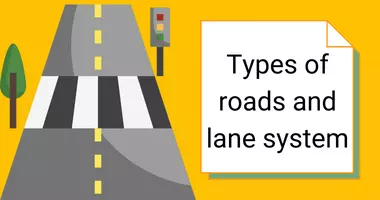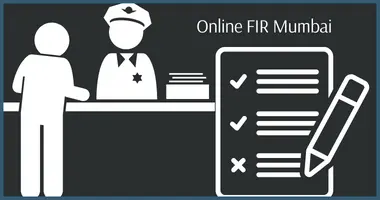Do want to know about the road and lane system? If yes then you must go through with this blog for full information regarding types of road and lane system. It is an important to know types of lane in road and how to follow the lane rules of road,
Types of road and lane system
There are 2 types of roads in India, which is explained in the following blog:
Non-urban Highways:
There are five different types of non-urban highways in the country:
-
Expressway
The goal of expressways is to facilitate the movement of huge numbers of motor traffic at high speeds. They serve medium and long-distance trips between prominent residential regions, industrial or business concentrations, and the central business district and they connect major areas with increasing visitor counts. On these types of highways, vehicle parking, product loading and unloading, as well as pedestrian traffic, are prohibited. Expressway is one of the types of road and lane system
-
National Highways:
These include major highways that cover the length and breadth of the country, connecting key regions, as well as highways from neighboring countries, state capitals, large business and tourist centers, and so on. National highways is one of the types of road and lane system.
-
State Highways:
These include any state’s principal arterial routes connecting district headquarters and important cities within the state, as well as connecting these to neighbouring states’ National Highways. State Highways is one of the types of road and lane system.
-
Major Roads in the District:
They are important roads with a district that serve portions of production and marketplaces and connect them or use the main highways.
-
Additional District Roads:
They’re roadways that connect non-urban production areas to market centers, taluka/tehsil headquarters, and other major thoroughfares.

Urban Roads:
The following five types of urban roadways are recognized:
-
Expressways:
Whether they run through towns or through rural areas, expressways serve the same purpose. Expressways are one of the types of road and lane system.
-
Arterial Streets:
These types of road and lane system, together with expressways where they exist, acts as the primary conduit for through traffic flows. Significant intra-urban mobility develops on this system, for example, between centre downtown and outlying residential areas, or between major suburban ‘zones.’ In densely developed central business districts, these roads may be spaced under 1-5 km, but in sparsely developed urban periphery, they may be spaced at 8 km or more. In general, arterial streets are split highways with full or partial access. The actions of parking, loading, and unloading are frequently restricted and regulated. Pedestrians should only cross at crosswalks.
-
Sub-arterial Streets:
Sub-arterial Streets are a type of street that runs parallel to
These are similar to arterial streets in function but have a lesser level of transport mobility. Their spacing varies from 0–5 km in the central business district to three–five kilometers on the outskirts of the city. Sub arterial streets are one of the types of road and lane system.
-
Collector Streets:
Collector streets should gather visitors from surrounding streets and feed them into arterial and sub-arterial streets or vice versa. These could be found in residential areas, commercial areas or industrial regions. On these routes, abutting properties are usually allowed complete approach. Except during peak hours, there are no parking restrictions.
-
Neighborhood Streets:
These are primarily intended to provide the usage of abutting properly and, in most cases, will not carry significant volumes of traffic. The majority of visits in metropolitan areas begin or end on these highways.
Depending on the major usage of the surrounding region, local streets could be non-commercial, commercial or industrial. They allow for unfettered parking and pedestrian traffic.

What is the Lane System in India?
There are two types of lane system in India. So, let’s have a look at how India’s lane system works. The following blog will help you regarding types of road and lane system:
Driving in the cities:
In India, only right-hand drive cars are available, hence we drive on the left side of the road. As you move to the right side of the road, the pace you should be driving rises as well. As a result, the leftmost side of the road is reserved for slow-moving vehicles. In cities, 2-lane roadways are the most common. As a result, if you’re cruising at a slow pace, you’ll want to stay in the leftmost lane.
If you need to pass someone, first check the right lane to see if it is empty. Then you signal to the side that you’re switching and pass the person ahead of you. It’s always a good idea to keep an eye out for such twists and change lanes into the straight road ahead of time. By doing so, you avoid getting in the way of oncoming cars looking to turn left.
Otherwise, all you have to do is point to the side you want to shift to and make the transition in one fluid motion. Keep an eye out for traffic behind you and slow down somewhat if you spot a car approaching at a high rate. Allow that car to pass before making the change. Maintain the proper pace and avoid making any abrupt direction changes.

NOC for 10 year old diesel vehicle and NOC for 15 year old petrol vehicle from Delhi
Driving on the highways:
Highways are the primary cause of accidents in the United States. Again, this is mostly due to a lack of knowledge about how to drive on motorways. There are no signals here, unlike on city highways. In our country, three-lane highways are now rather prevalent. As you progress from the leftmost to the rightmost lane, the structure works at three speeds: slow, medium, and fast.
On highways, staying in the middle lane is the safest bet. Slower vehicles will be on your left, while faster vehicles will easily pass you on the right. If you’re in the rightmost lane and a quicker car approach, simply indicate to the left and give him/her the right of way.
So that concludes our explanation of the many types of road and lane system used in our country. To guarantee your safety and well-being, we strongly advise you to adhere to these structures and guidelines at all times, regardless of who is around you.
I hope this blog helps you to clear all your doubts regarding the different types of roads and lane system in India. If you still have some queries and want to ask then you can mention it in the comment box.




Leave a Reply